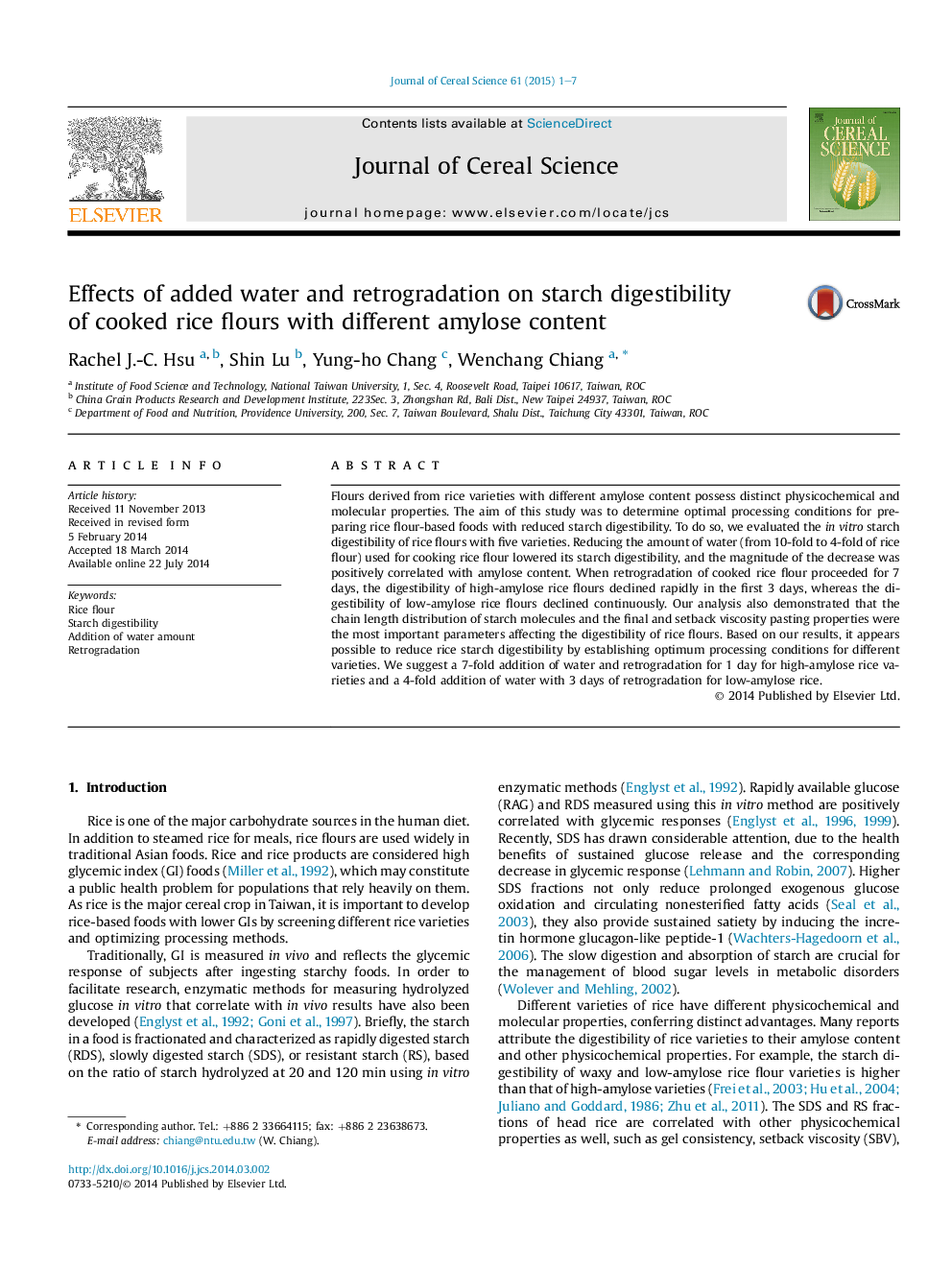| Article ID | Journal | Published Year | Pages | File Type |
|---|---|---|---|---|
| 4515693 | Journal of Cereal Science | 2015 | 7 Pages |
•We identified preparation conditions optimized to reduce starch digestibility in five different rice varieties.•These preparation methods could be used to produce healthier rice-based products with a lower glycemic index.•They could also facilitate the improvement of traditional rice foods and the creation of new rice products.
Flours derived from rice varieties with different amylose content possess distinct physicochemical and molecular properties. The aim of this study was to determine optimal processing conditions for preparing rice flour-based foods with reduced starch digestibility. To do so, we evaluated the in vitro starch digestibility of rice flours with five varieties. Reducing the amount of water (from 10-fold to 4-fold of rice flour) used for cooking rice flour lowered its starch digestibility, and the magnitude of the decrease was positively correlated with amylose content. When retrogradation of cooked rice flour proceeded for 7 days, the digestibility of high-amylose rice flours declined rapidly in the first 3 days, whereas the digestibility of low-amylose rice flours declined continuously. Our analysis also demonstrated that the chain length distribution of starch molecules and the final and setback viscosity pasting properties were the most important parameters affecting the digestibility of rice flours. Based on our results, it appears possible to reduce rice starch digestibility by establishing optimum processing conditions for different varieties. We suggest a 7-fold addition of water and retrogradation for 1 day for high-amylose rice varieties and a 4-fold addition of water with 3 days of retrogradation for low-amylose rice.
